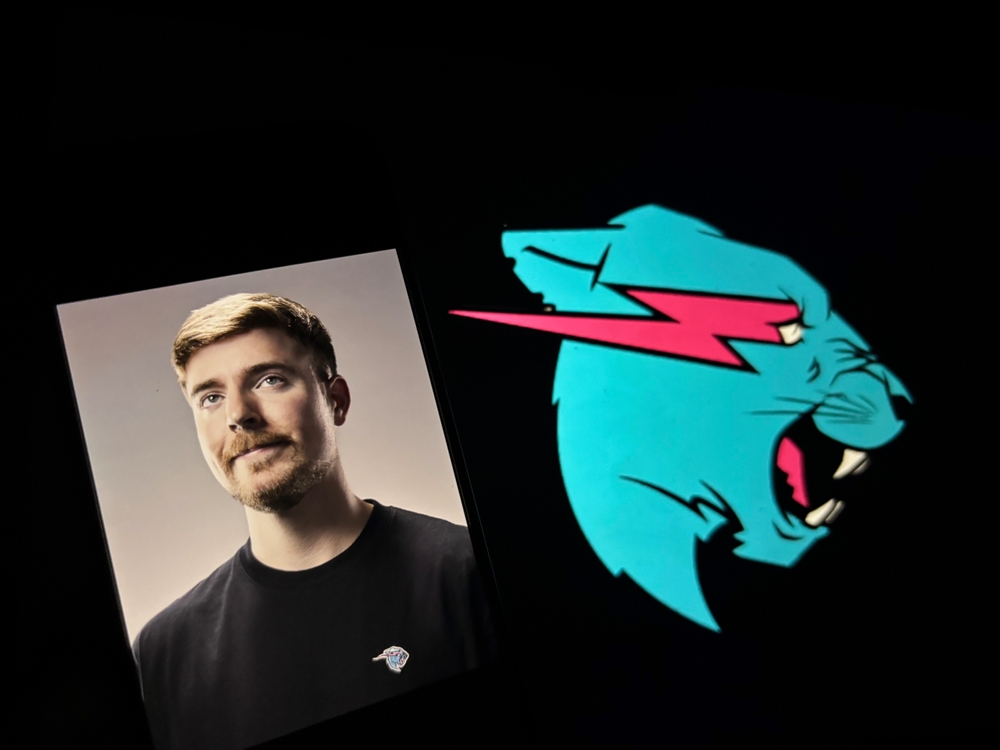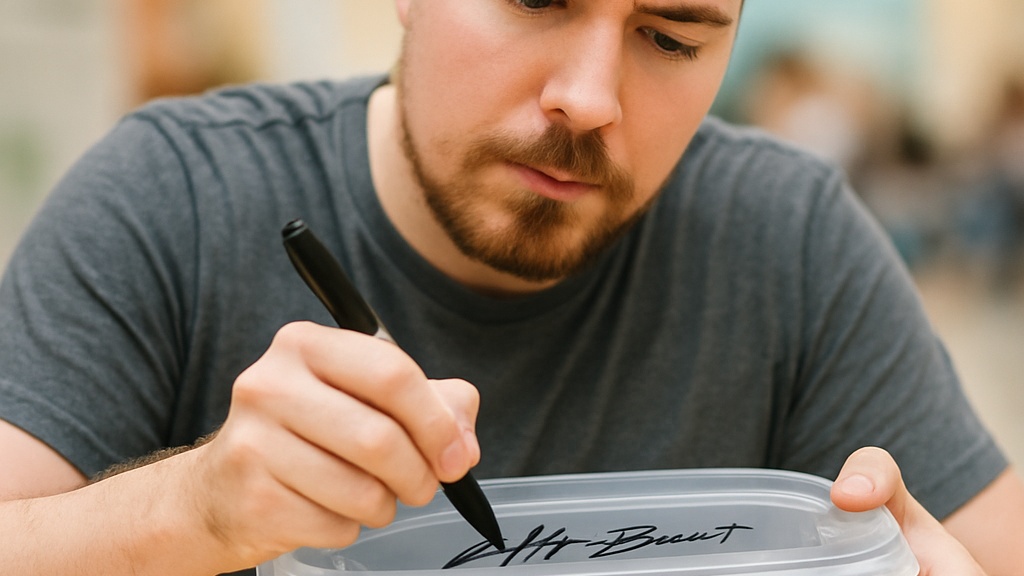MrBeast Celebrates Massive Milestone as #TeamSeas Removes 34 Million Pounds of Ocean Waste

When YouTube’s philanthropic powerhouse MrBeast (Jimmy Donaldson) and former NASA engineer Mark Rober launched the #TeamSeas initiative in 2021, the internet braced for another grand stunt. Yet what they delivered wasn’t a challenge—it was a movement. Their simple but staggering goal: to remove 30 million pounds of trash from oceans, rivers, and beaches worldwide. Skeptics called it impossible, critics dismissed it as performative, and fans wondered whether viral enthusiasm could really clean up the planet.
But history has a way of favoring boldness. With unrelenting transparency and charisma, Donaldson and Rober turned what seemed like internet spectacle into global action. Their campaign, powered by YouTube videos, creator collaborations, and a clear one-dollar-one-pound formula, struck a nerve with audiences weary of environmental despair. For once, the narrative wasn’t about guilt—it was about participation.
Now, years later, that impossible dream stands transformed into a monumental reality. Over 34 million pounds of trash have been removed—exceeding the goal by a full 4 million pounds. Each discarded bottle, tangled net, and ghostly fishing line pulled from the sea tells a story of global cooperation. It’s not merely a triumph of numbers but of mindset: a sign that online creativity, when fused with purpose, can literally reshape the planet’s surface.
And perhaps the most extraordinary part is how naturally it unfolded. What began as a collaboration between two creators turned into a cultural movement, crossing borders, languages, and ideologies. It showed that when people are offered the chance to help rather than scolded to care, they rise to the occasion.
IN 5 HOURS WE’VE REMOVED 3,000,000 POUNDS OF TRASH FROM THE OCEAN!
— MrBeast (@MrBeast) October 30, 2021
KEEP IT GOING! WE ARE 10% DONE – https://t.co/SbN0Hkynwb pic.twitter.com/MxWvDrVJSl
From Hashtag to Hands-On Action
The birth of #TeamSeas reads like a masterclass in turning clicks into impact. Within months of launch, the campaign raised more than $33 million from donors spanning 200 countries and territories, proving that environmental responsibility transcends nationality. The money wasn’t left to float in good intentions; it was immediately funneled into partnerships with Ocean Conservancy and The Ocean Cleanup, two leading organizations already fighting marine waste.
Through these partnerships, thousands of volunteers were mobilized across coastlines, riverbanks, and open waters. These were not anonymous figures—they were teachers, students, divers, and families who turned up with gloves, bags, and determination. Every cleanup event became a local celebration of global unity. The scale of it was almost symphonic: a worldwide rhythm of care conducted by the digital baton of creators.
Each donation became a thread in a vast, interconnected web of action. A single student donating a few dollars in Brazil was, in effect, standing shoulder to shoulder with a volunteer picking up debris in Vietnam. The one-dollar-one-pound equation was simple, brilliant, and profoundly democratic. It allowed every contribution—no matter how small—to carry visible weight in the final tally.
The success of #TeamSeas showed that the most effective campaigns aren’t always the ones that promise personal benefit, but the ones that offer collective purpose. It revealed a deeper truth about the digital era: when technology is paired with tangible mission and emotional clarity, it can mobilize humanity faster than any institution or government agency.
MrBeast revealed that all 34 million pounds of trash from TeamSeas have been removed from the ocean pic.twitter.com/9is31a61zY
— Dexerto (@Dexerto) July 16, 2024
The Power of Online Communities
The digital machinery behind #TeamSeas was nothing short of astonishing. According to Tubefilter, #TeamSeas content amassed 1.3 billion video views across 20,000 social channels—an ocean of enthusiasm in itself. YouTubers, TikTokers, Twitch streamers, and Instagram creators all joined forces, using their corners of the internet to drive donations. Some wrote original songs; others crafted animated shorts or coded small games where users “cleaned” virtual oceans. What emerged was not just a fundraiser—it was a cultural phenomenon powered by creativity.
This mass participation redefined what “online influence” could achieve. It wasn’t about chasing clout or virality for its own sake. It was about coordination—a new kind of digital social contract where people united not through algorithms, but through shared purpose. For once, the internet’s capacity to connect millions wasn’t used to divide opinion, but to unify intention.
MrBeast, reflecting on the results, said in his July 16 update, “This couldn’t have happened without you guys all coming together, one donation at a time.” Mark Rober echoed the sentiment, saying, “Online communities from around the internet rallied together to give a fist bump to Mother Earth.” It was a moment where social media transcended entertainment and became infrastructure for good.
And the implications go beyond cleanup. The #TeamSeas campaign has set a new benchmark for what creator culture can accomplish. It’s no longer enough to just entertain; audiences now expect their idols to lead by example. The modern creator has evolved from influencer to instigator of real-world change, and that shift may prove as revolutionary as the campaign itself.

How 34 Million Pounds Were Removed
Achieving a feat like this requires more than goodwill—it demands logistics, engineering, and relentless precision. Ocean Conservancy spearheaded ground operations, organizing thousands of coastal cleanups in regions hit hardest by marine pollution. Meanwhile, The Ocean Cleanup deployed its innovative interceptors: autonomous machines designed to trap debris in rivers before it spills into the sea. These interceptors, powered by solar energy and guided by AI, became mechanical custodians of the planet’s arteries.
Every pound of trash collected was cataloged, weighed, and processed. The data didn’t just prove progress—it guided it. The information gathered helped scientists identify pollution hotspots, allowing for better long-term policy planning. It wasn’t merely about removing waste; it was about understanding its flow. The campaign became a real-time laboratory for studying humanity’s relationship with plastic.
The environmental results were immediate and visible. Beachgoers in parts of Asia and Latin America reported noticeably cleaner shorelines. Marine biologists recorded increased sightings of species once scarce due to litter-choked waters. These small ecological recoveries were, in truth, massive victories—visible proof that action, not just awareness, could turn the tide.
Perhaps the most remarkable aspect is that this transformation was financed by ordinary people, guided by entertainers, and executed by scientists and volunteers. It’s a model of collaboration that governments often struggle to replicate. And in that synthesis—between creators, citizens, and experts—lies the blueprint for future environmental revolutions.
Beyond the Numbers: A Message of Hope
The statistics behind #TeamSeas are staggering, but the human story is even more profound. This wasn’t a campaign that scolded the public into guilt; it invited them into action through optimism. It reframed environmental responsibility as something joyful, creative, and achievable. That emotional pivot—from fear to empowerment—was key to its success.
For countless participants, #TeamSeas became more than a donation link; it became a statement of belief that individuals still matter in the face of planetary problems. When you multiply that belief across millions, you get not just cleaned oceans, but a restored sense of human agency. The campaign reminded people that hope isn’t passive—it’s built, pound by pound, by those who refuse to accept decline as destiny.
It also reinforced a new narrative in digital culture. For years, the internet has been criticized for spreading misinformation and superficial trends. #TeamSeas countered that cynicism with evidence that virality could be purposeful. It proved that hashtags could move hands, and likes could lead to lasting change.
In the end, the project’s truest legacy might be emotional: a shared feeling that collaboration, not competition, defines the best of humanity. In that sense, the cleanest thing #TeamSeas washed wasn’t the ocean—it was our collective sense of possibility.
What’s Next for MrBeast and Rober?
The duo’s earlier collaboration, #TeamTrees, planted more than 20 million trees around the world and captured imaginations across generations. Combining that success with #TeamSeas, their total environmental impact now exceeds $50 million in global restoration efforts. Their philanthropic empire has grown from YouTube videos into a genuine movement for change, bridging the gap between entertainment and ethics.
MrBeast and Rober have hinted that their next project will be “bigger than both trees and seas combined.” While details remain under wraps, it’s clear that they’re not slowing down. They’ve built a model that blends engineering, storytelling, and global participation—a kind of new-age humanitarianism powered by algorithms and sincerity in equal measure.
More importantly, their projects have redefined what “celebrity activism” can look like. Rather than one-off charity galas or brand partnerships, they’ve pioneered scalable philanthropy: movements where fans are collaborators, not spectators. They’ve set an example for creators worldwide, proving that the attention economy can, in fact, pay dividends to the planet.
Whatever form their next challenge takes, it’s safe to assume it will follow the same formula—ambitious, measurable, and inclusive. Because for MrBeast and Mark Rober, helping the world isn’t a side quest. It’s the main mission.
Reflection: What #TeamSeas Teaches Us About Collective Power
#TeamSeas is more than a campaign; it’s a case study in modern human potential. It shows that the tools we use for entertainment can also be engines of progress, and that digital spaces, often dismissed as shallow, can harbor profound depth when guided by purpose. The 34 million pounds of trash removed symbolize something larger—a global reminder that humanity’s greatest achievements are born from collaboration, not competition.
In an era defined by climate anxiety and digital fatigue, #TeamSeas emerged as a beacon of what’s still possible when imagination meets integrity. It didn’t just clean oceans; it cleaned perspectives. It restored faith in the idea that collective effort can still overcome the inertia of global challenges.
And perhaps most importantly, it redefined the role of creators in the 21st century. They’re not just entertainers anymore; they’re educators, mobilizers, and architects of change. #TeamSeas demonstrated that the biggest stage in the world—the internet—can also be the cleanest one when used for good.
As waves roll a little clearer and beaches breathe a little easier, the legacy of #TeamSeas will remain: a reminder that when billions of clicks converge on a cause, they can move not just metrics—but mountains, rivers, and seas themselves.
Loading...

